9 Big Ecommerce Lessons From Shogun in 2022: A Blog Retrospective
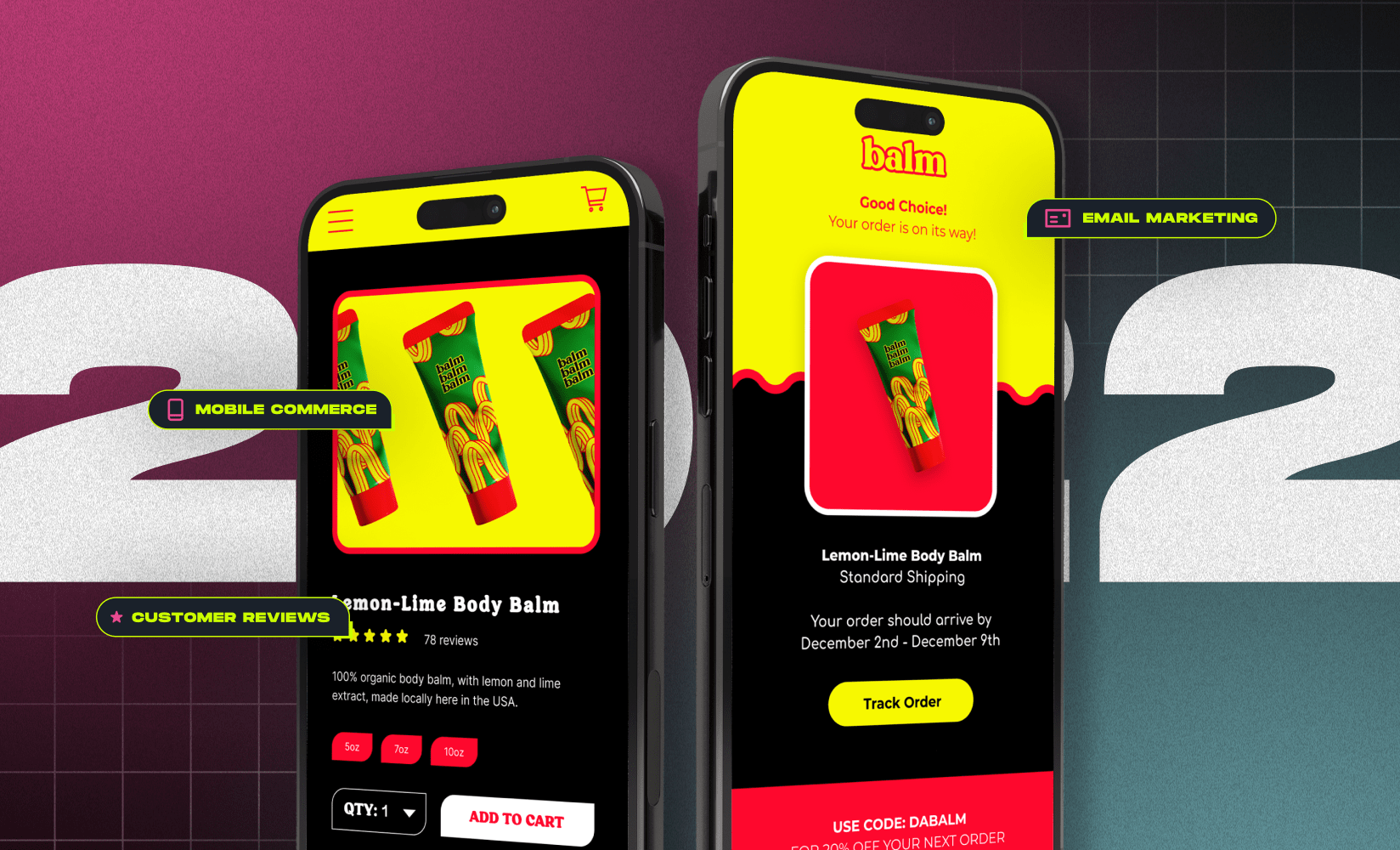
Whew! Another year (almost) in the books.
When you’re up to your eyeballs in to-do lists, campaign launches, and ROI-tracking—especially during EOY planning mode—it’s hard to see and appreciate how much you’ve grown, adapted, and changed.
But reflection is key for improvement.
Our team has been hard at work all year covering topics you care most about as you scale your ecommerce brand.
As we reviewed our content log for 2022, several lessons stood out that you can apply to your brand next year—whether you’re a year or two into building your business or looking for advanced ecommerce practices to level up.
Grab your holiday beverage of choice, and let’s unpack the biggest lessons of the year. ☕
Or, you can skip ahead to the takeaways that interest you most:
- Customer research
- Email marketing
- Ecommerce design
- Merchandising
- Site performance
- Fulfillment and logistics
- Omnichannel selling
- Internationalization
- Headless commerce
Customer research: Getting to know your audience to craft better shopping experiences

To create dynamite online shopping experiences, you must get to the root of who your customers are and what they like.
Only then will you be able to apply those learnings across every touchpoint in your customer’s journey (which you should definitely be mapping).
Customer reviews are a great place mine insights from to learn more about your customers and your own business.
If you don’t have a review system in place, read up to learn how to add reviews to Shopify and how you can add them to any page on your site (not just product pages).
You can learn about your potential customers in more indirect ways, too.
Leveraging influencer marketing is an excellent way to learn about your audience and connect with them indirectly with someone they trust.
Whether you primarily work with influencers on Instagram or another social media platform, building trust with shoppers this way can have profound results on your bottom line.
Lastly, another important leg of customer research is search engine optimization (SEO).
With smart SEO tactics, you can learn how your target audiences search and discover products online, then create relevant content to show them.
Learn more about leveling up your SEO for whatever ecommerce platform you use:
All this customer research is also critical for building impactful ecommerce ad campaigns and effective SEO-driven content marketing.
We created several in-depth posts on how to make the most of advertising on some of the most popular ecommerce channels:
With all this great customer research in hand (and hopefully a stellar email list), you’ll be well-positioned to implement incredible email marketing campaigns.
Which brings us to our next point…
Email marketing: Sending value-packed, revenue-driving emails
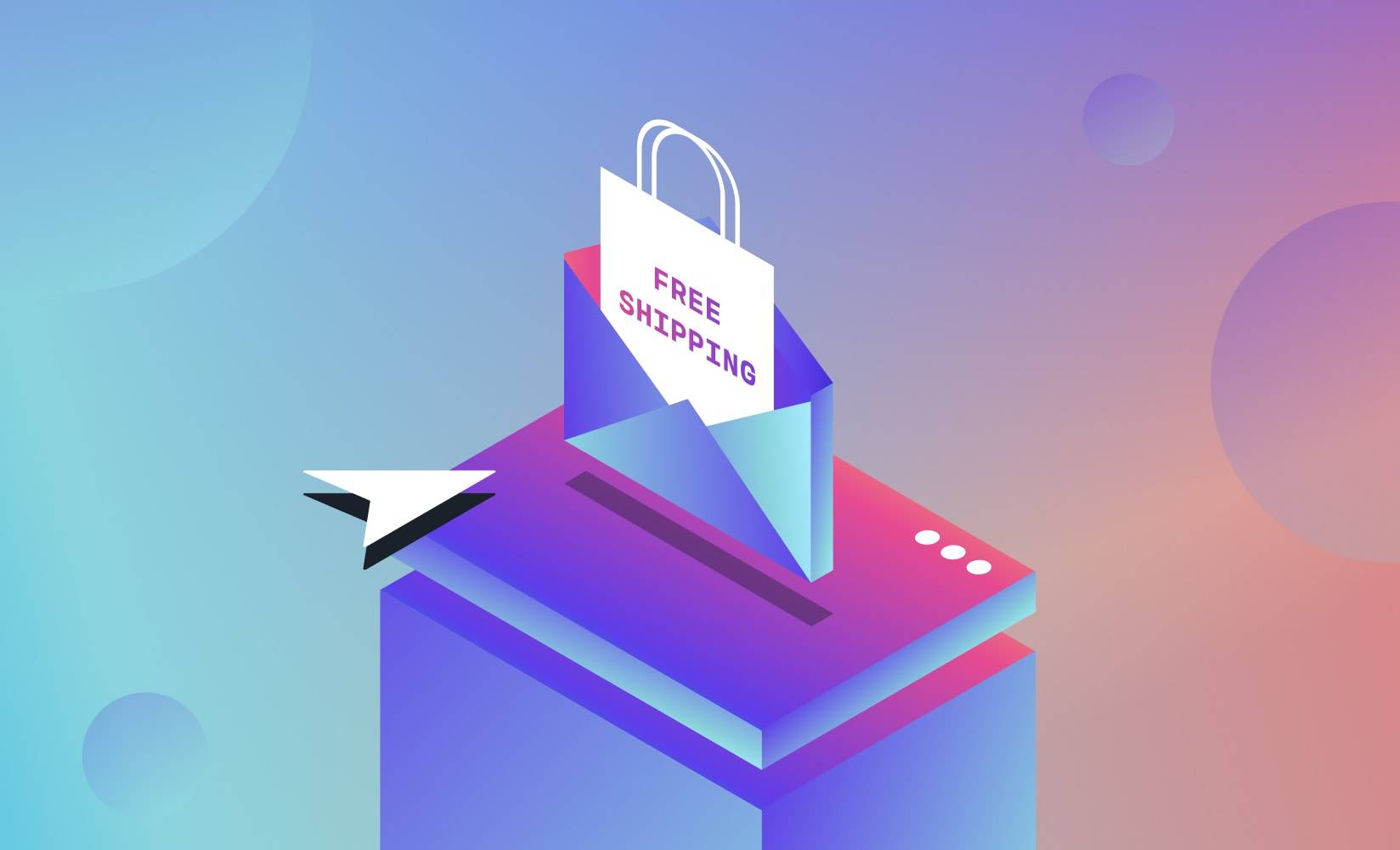
Contrary to whispers and roars about the end of email marketing, it’s stronger than ever.
In fact, email marketing revenue is expected to increase by roughly 13% in 2023, and for good reason. The ROI of email marketing is nothing to bat and eye at; the average brand makes $42 for every $1 spent (that’s a 4,200% ROI)!
But this ultra-high ROI can only be achieved if customers open your emails, of course. Not sure where to start?
This article includes 10 actionable tips for boosting your open rates, covering everything from personalization to great subject lines.
Writing subject lines can be tricky, but we’ve got you covered with 74 engaging email subject line examples to inspire your next campaign (and boost those opens).
Once you’ve got your footing, great email templates and sequences are a handy way to show up consistently in your customers’ inboxes. We’ve got an ebook packed with free ecommerce email templates to get you going.
If you need a bit of inspiration on what kinds of emails to send to your list as you plan for the next year, don’t miss our post full of 10 powerful ecommerce email examples.
Lastly, if you’re looking for ways to improve your email marketing strategy, our post on email marketing best practices will do the trick.
Now, having spent so much valuable time working on making their email experience powerful, you’ll want to make sure you are sending them to a website worth the click.
So, let’s talk about ecommerce store design…
Ecommerce design: Inspiring online stores to help you craft your ideal shopping experience

Inspiration for your next conversion-driving site design can be found everywhere online.
Whether you’re an apparel brand, a jewelry outfit, a tried and true t-shirt shop, or fall into the CPG brand category, there are always ways to elevate your store’s design.
No matter what ecommerce platform you use, you can build stunning shopping experiences that turn perusers into customers.
This year, we saw from BigCommerce stores (both monolithic and headless), Adobe Commerce stores, and Shopify stores alike just how creative brands are getting with the design of their DTC stores.
Think: engaging About Us pages, mesmerizing background videos, bold visuals, product pages that educate rather than just sell, and landing pages that make your products irresistible.
However, we can’t forget the less-sexy pages on your website.
Our posts on incredible FAQ page examples and inspiring mission statement examples will help you get over the hurdle of making these pages compelling if you need the extra push.
In the world of headless commerce, we rounded up the best headless sites we could find into one stunning post. Be sure to bookmark that one if you’re considering exploring a headless solution next year.
Now that your store looks cool, you want to turn your attention to how your products are represented across all those lovely pages. Let’s talk about the power of merchandising…
Merchandising: Differentiate your site experience with intentional product and visual displays
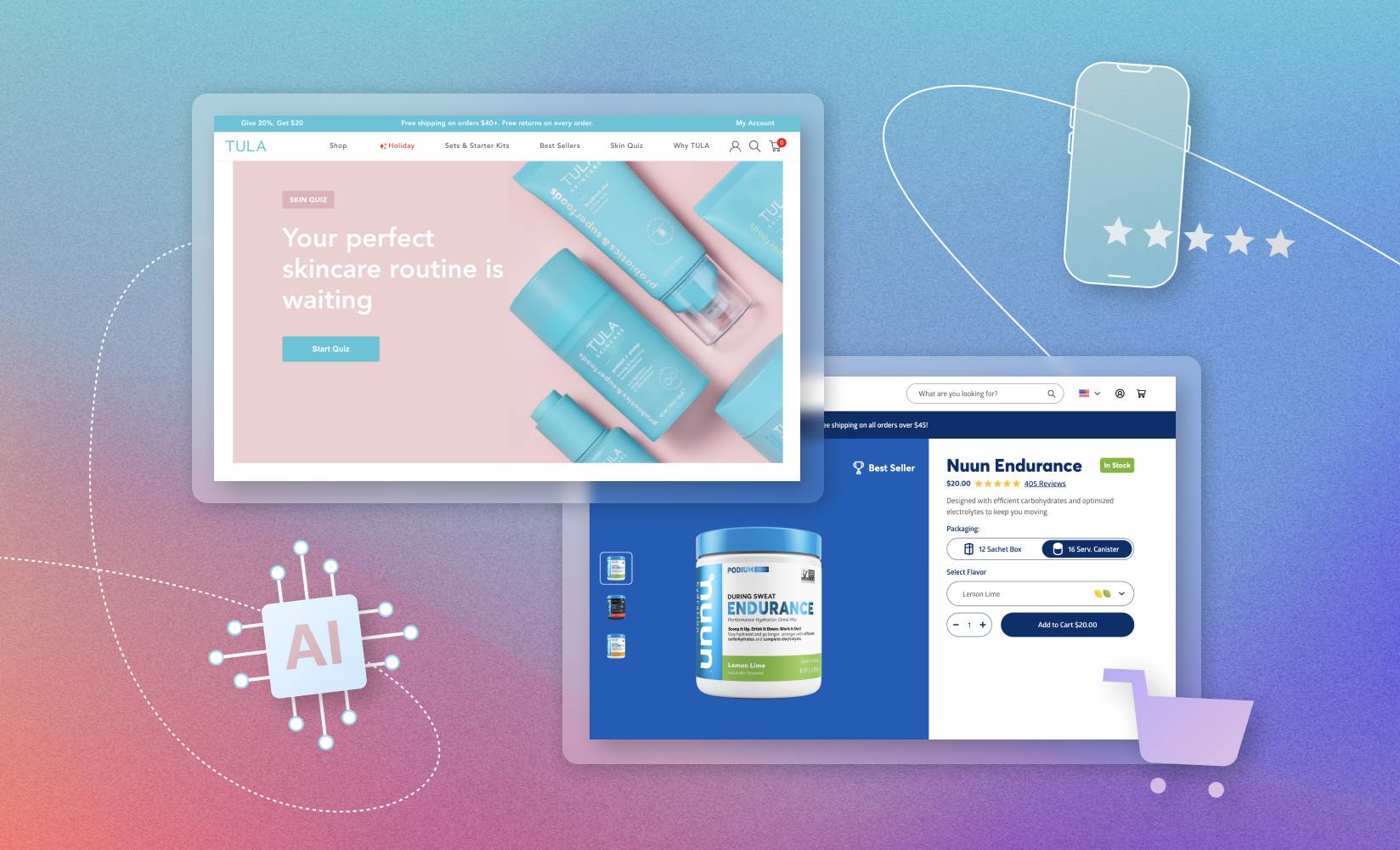
Designing an online shopping experience that is aesthetically pleasing and high-converting is the name of the game.
But standing out among the 12 million+ ecommerce stores out there is a tall order.
Visual merchandising helps your brand differentiate itself while creating a lasting impression that keeps customers coming back.
Merchandising also helps supercharge your marketing campaigns, whether they are time-limited flash sales, sitewide offers, or some other kind of promotion.
It can feel daunting to know where to begin or which ecommerce merchandising best practices you should focus on, so let’s look at three main methods:
Add eye-catching product photography
When thinking about the visuals on your site, including a balance of user-generated content (which can be monetized!), product photos, and videos, create an engaging shopping experience.
There’s a lot more to product photography than simply pointing and shooting a camera.
Having a shot list, the right tools and setup (like a background), and a high-quality camera can help you take eye-catching photos.
When adding to your site, ensure your images are sized correctly—this can impact your SEO and the overall customer experience.
Feature engaging product videos
Video helps your brand stand out among several other benefits—like product discovery and brand awareness.
However, similar to photos, you’ll want to ensure that your videos are edited to top-notch quality.
Pixelated imagery or choppy video can have a reverse, negative effect on your brand.
Elevate your product pages with detail and personalization
When optimizing your product pages, there are many approaches you can take.
First, revisit your product descriptions to see where they could be improved from a clarity, detail, and benefits lens.
Creating a personalized ecommerce experience for your customers is another excellent way to differentiate—whether by saving shopper preferences (like location or sizes) or adding a related products section on the page based on browsing history.
Personalization also helps with upselling and cross-selling, which help increase AOV and product discovery.
After all, 91% of consumers are more likely to shop with brands who “recognize, remember, and provide relevant offers and recommendations.”
For even more inspiration as you plan next year’s campaigns, we’ve rounded up the best product page design examples for you to bookmark.
Lastly, this post from Nomad’s creative director may inspire you to prioritize merchandising next year and beyond. Here’s a taste:
“We want every touchpoint our customers have with the Nomad brand to be the best possible because we know the care brands take with these touchpoints signals quality. We do this through thoughtful design without compromise. It’s built into all the micro-moments.”
— Nick Walden, Creative Director, Nomad
You are cooking with fire now. Your merchandising game is on point, your store looks amazing, you’ve learned a lot about your customers, and they love your emails.
What’s next? That’s right—page speed.
#cta-visual-pb#<cta-title>Enable your whole team to start creating<cta-title>Designed for larger ecommerce teams, Shogun Page Builder Advanced gives you 10+ user seats with unique roles and permissions to scale your content creation efforts.Learn more
Site performance: Improving your speed and user experience to boost sales
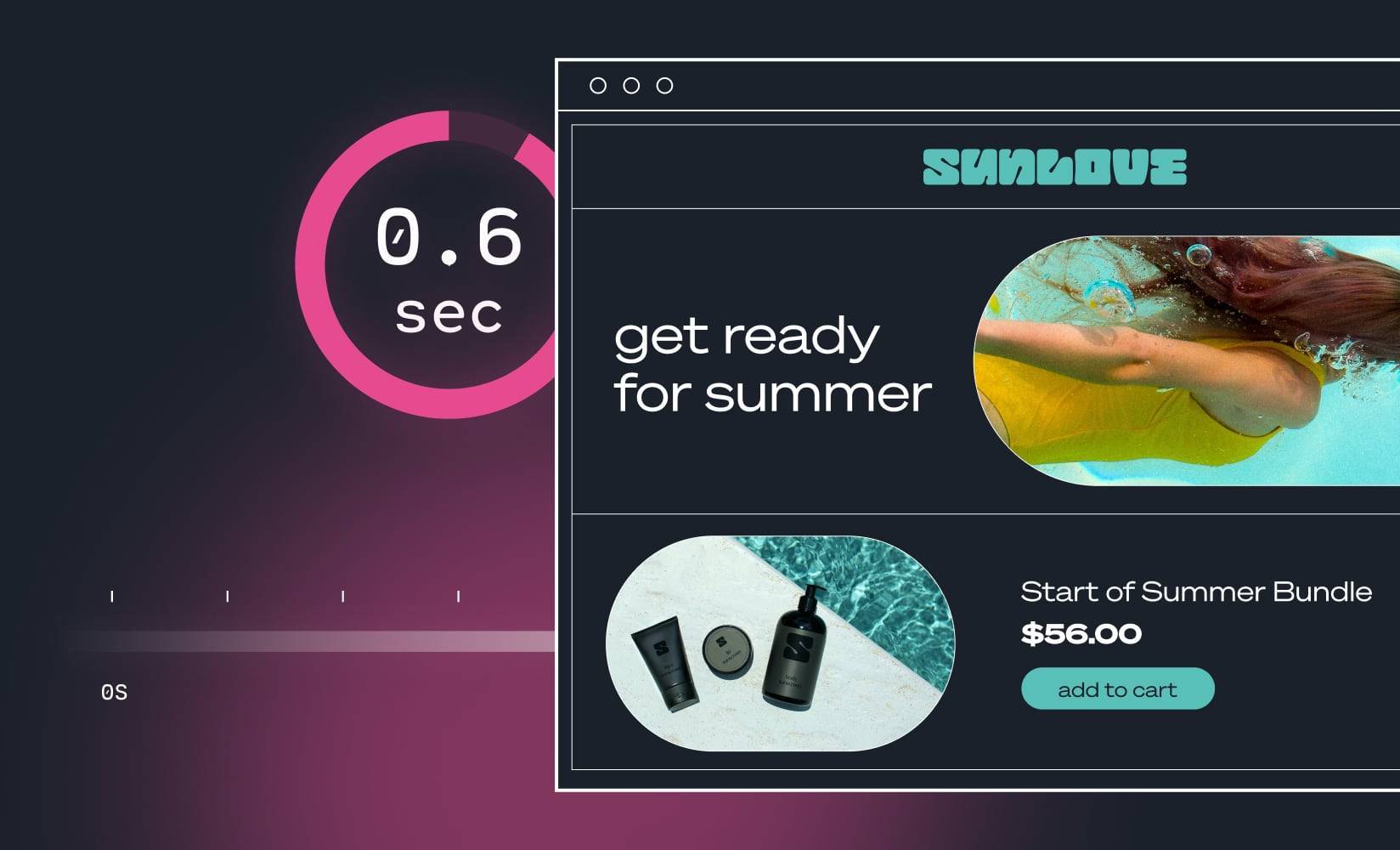
Site performance can be a tricky thing.
As you make changes to your site—swapping images, adding video, running a new campaign, loading up on apps—your site speed fluctuates, too.
Keeping your site performant—between 0-2 seconds-fast and with minimal latency—means shoppers will stay on your site and hopefully convert.
Page speed measurement tools like Google’s Lighthouse tool and PageSpeed Insights can help you gauge how your site is performing in a simulated customer environment.
These tools are best used when updating your site and gauging the impact of, say, adding a new background video or high-res product images.
Page speed tools are also important for understanding how your site fares in the SEO trenches.
Site speed is a search ranking factor, and tools like Lighthouse will identify areas of your site you can improve to boost your rankings in the SERP.
For BigCommerce merchants specifically, we’ve got a dedicated post to help you improve your site speed and maintain a fast shopping experience for your customers.
If you find your site is still clocking in slower than you’d like, this article on advanced page speed fixes will help diagnose and fix your site issues.
At a certain point, brands need an ecommerce solution that balances great UX and speed. Headless commerce (more on that below!) allows you to build the dynamic, engaging site you envision without the speed tradeoffs.
Delivering awesome and speedy online experiences is great. The customers love you and they placed their order, so now you have to deliver their products—and fast. Let’s talk logistics.
Fulfillment and logistics: Doubling down on fast shipping and a positive post-purchase experience

The last few years have been nothing short of overwhelming for the shipping and logistics arms of ecommerce businesses.
From the seemingly endless delays and materials shortages and everything in between, the supply chain has been feeling the heat. And, by extension, so have ecommerce brands.
Brands are turning to sourcing channels like wholesale marketplaces to find quality suppliers and increase profit margins.
For brands looking to ease inventory issues completely, many wholesale suppliers offer dropshipping (products are shipped directly to customers from a third-party warehouse).
Just be sure to do your supplier research; by surrendering inventory control, you want to ensure the final product is up to par and delivered as promised.
Alternatively, how do brands build their own resilient ecommerce fulfillment strategy as they continue to scale?
Expanding into omnichannel fulfillment—or fulfilling orders across many interconnected channels—can help you stay afloat as long as you can manage the increased compexity.
Outsourcing your ecommerce fulfillment (rather than DIY-ing it) could also be a smart move for your brand and get your products to your customers faster.
Also, your return policies (and your shipping policy) may need to be revisited in the new year.
For example, if you decide to outsource your fulfillment, they may have a different returns and shipping process for customers. To ensure a seamless transition for both you and your customers, update your policiy page—and perhaps leverage the butter bar on your homepage to call out any updates for good measure.
Now, let’s talk the cost of returns. For many brands, returns are becoming pricy.
Adjusting how you approach returns could mean a huge break in your overhead costs, but be careful; you don’t want to scare customers away.
If you can expertly handle sourcing, shipping, and reverse logistics, you will impress your customers and earn their loyalty (and their repeat purchases).
But, can you manage this feat on several interconnected channels? That’s the customer-centric challenge of omnichannel commerce, which is next up on the docket.
Omnichannel selling: Expanding into multiple sales channels to grow your reach
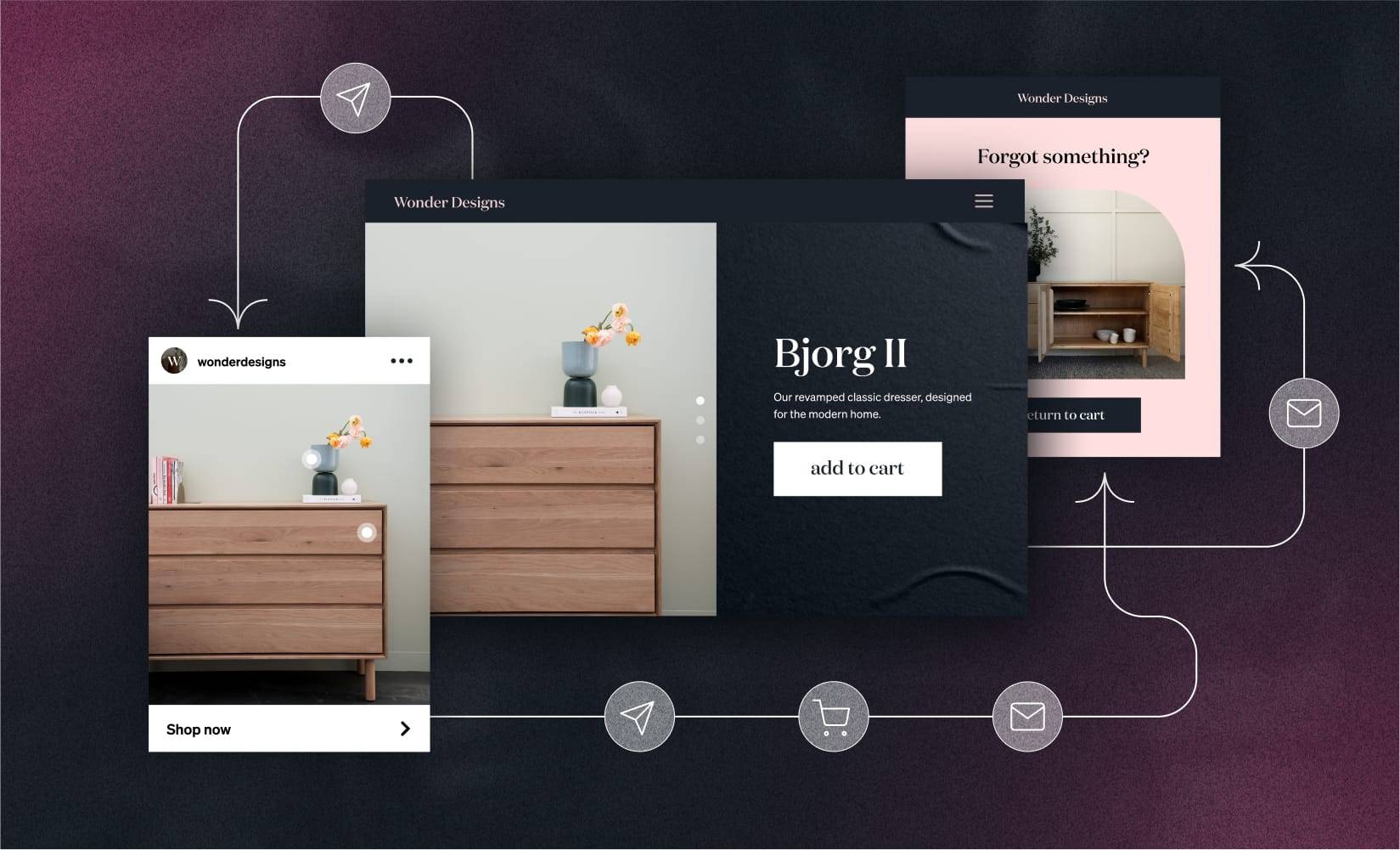
They say that change is the only constant. The saying definitely applies to the ecommerce world—especially after the last few years.
The COVID pandemic brought on a host of new shopper behaviors and selling channels, like a shift to live shopping and a boost in mobile commerce growth.
The adoption of live shopping and an increase in mobile usage have solidified behaviors like buying through social media like Instagram Shopping, Facebook Shops, and, lest we forget, TikTok.
Ecommerce brands have also turned to online marketplaces—including Amazon, Walmart, and other online selling sites—as alternative selling channels to accompany their owned online store.
For brands who’ve reached a certain level in their growth, omnichannel commerce has landed on the radar of many. Omnichannel commerce connects a brand’s shopping and marketing channels so they can offer customers a unified experience—no matter if they’re offline or online.
It can be challenging to wrangle various channels into a seamless experience—both from a logistics, retail, and marketing perspective.
Luckily, we wrote detailed articles on all three: Omnichannel Fulfillment, Omnichannel Retail, and Omnichannel Marketing.
Omnichannel often gets confused with multichannel commerce, which offers separate experiences (while maintaining brand consistency, of course) across the disparate channels.
Multichannel ensures your brand meets your customers where they are and provides value unique to that channel.
Whether you go multichannel or omnichannel, the repeated (and successful) effort of juggling many things means that you are on your way to scaling your operations.
As you scale your brand, you are likely to grow beyond multiple channels into multiple countries. This is my segue into internationalization…
#cta-visual-pb#<cta-title>Scale content creation across multiple storefronts<cta-title>Designed for larger brands, Shogun Page Builder Advanced enables your team to copy and clone content across your sub-brands and various storefronts with ease.Learn more
Internationalization: Expanding into different ecommerce markets

As your brand grows, you may want to step into different ecommerce markets outside your home country.
We wish we could say global expansion is as easy as converting CAD to EUR, but there’s much more to it.
Compliance, localization, and platform capabilities—oh my!
For Shopify brands, setting up multi-store on your site allows you to expand into different markets or manage sub-brands with different store instances.
If your brand is looking to expand internationally, you may want to consider moving to Shopify Plus if you haven’t already.
Bonus: If you’re a Page Builder Advanced user, you have access to content syncing, which means you can sync any page in your first store to any other store you manage and customize from there.
Many scaling brands interested in internationalization are starting to see limitations of traditional ecommerce platforms, sparking conversations around alternative ecommerce solutions.
Achieving multi-store functionality via headless commerce means brands can grow into new markets with increased flexibility around content, currency, localization, and more.
Growing brands often find themselves outgrowing their ecommerce technologies. Scaling to multiple stores and countries takes more complex and hardy systems.
One way to future-proof your operations is to bring your brand headless, enabling faster and richer shopping experiences across your many channels and stores. So, let’s get into headless commerce.
#cta-mini-fe#Want to learn more about international expansion? Download our free ebook
Headless commerce: Investing in storefront experience to drive revenue
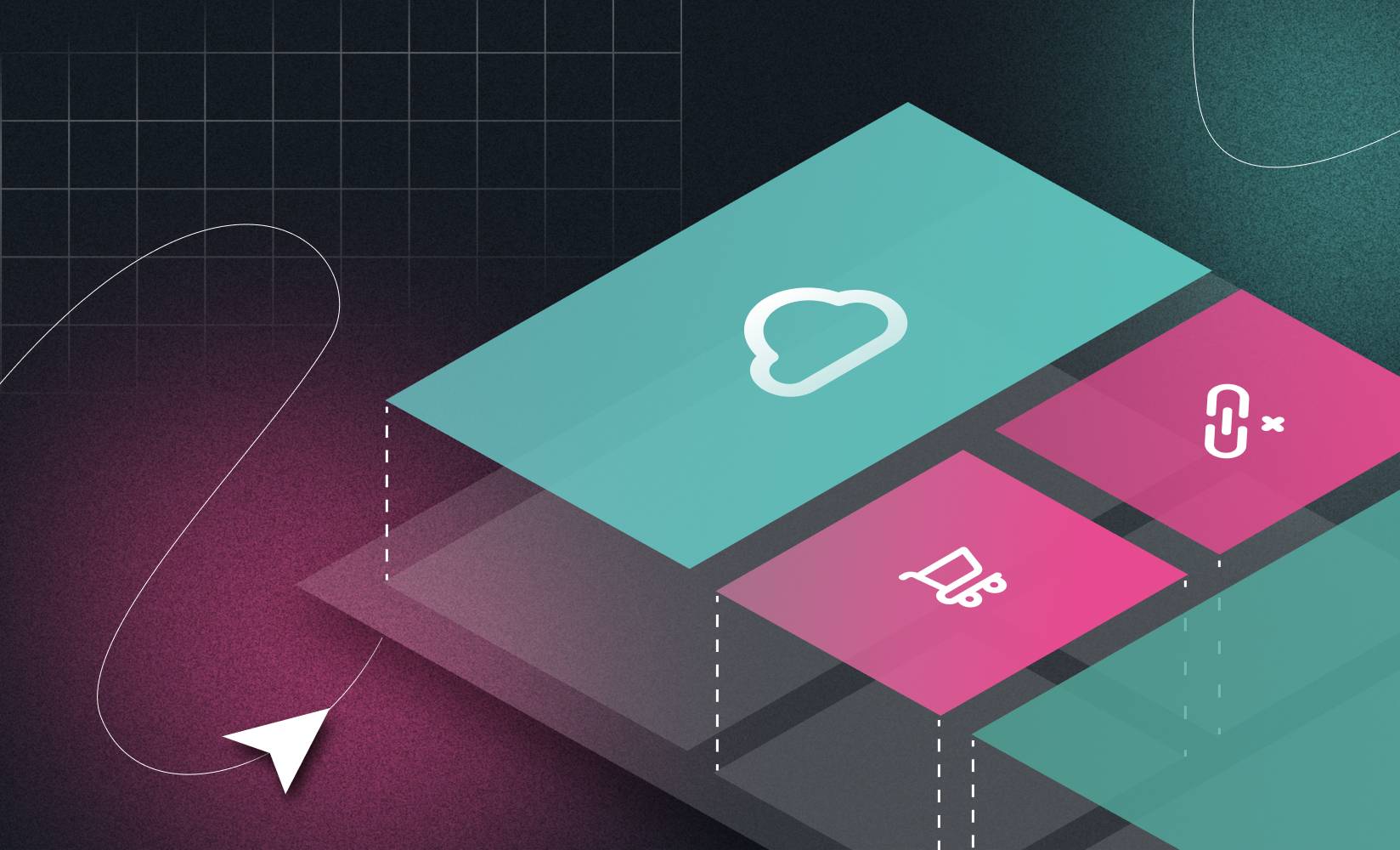
Another year in ecommerce, another year headless commerce continued to make waves as more marketers discover what’s possible with this tech.
Plus, Shopify entering the headless chat with Hydrogen speaks volumes about headless commerce’s role in the future of ecommerce.
Traditionally, brands with sites using monolithic site architecture have had to choose between sleek design features and blazing-fast site speed. Scaling enterprise-level brands quickly run into issues with monolithic site infrastructure.
But with headless tech, there are no tradeoffs between the two anymore.
Our post on the topic explains why brands can achieve the site experience they envision—both from a design and performance perspective—with headless commerce.
Headless commerce has long been a developer-centric tech packed with jargon.
To break through the jargon, we wrote an article explaining the technical world of headless architecture (i.e., how brands can build incredibly fast, memorable shopping experiences).
Perhaps the biggest double-edged sword of headless commerce is that there’s no one way to achieve headlessness for your site. It’s complex and it’s all up to you.
The more traditional route, often referred to as composable commerce, is a popular method for going headless.
In a nutshell, this is where you handpick (and subsequently manage) every technology used to power your store’s frontend—from the CMS and CDN to the SSR and middleware.
However, composable commerce isn’t the best avenue for many brands.
Depending on your company size, developer/tech resources, and budget, opting for an alternative route to headless—like an all-in-one ecommerce Frontend Platform, like Shogun Frontend—may make more sense.
What’s in store for next year in ecommerce?
2022 brought back a lot of in-person shopping, but that didn’t stop digital experiences from thriving. Ecommerce continues to grow.
Next year, the lines of in-store and online shopping will only blur further—making it all the more important for brands to figure out how to maximize both.
The strategies you use to get in front of potential customers and retain existing ones will decide how you weather the possibly uncertain times ahead.
No matter where you are in your ecommerce journey, there are valuable learnings you can implement to find success.
How will you use this year’s lessons to plan for the next?
#cta-visual-pb#<cta-title>Ring in the new year with a conversion-driving storefront<cta-title>Next year is for building memorable, performant shopping experiences. See how you can do just that with Shogun Page Builder Advanced. Learn more

Kaitlyn Ambrose
Kaitlyn works on all things content at Shogun. ⚡



